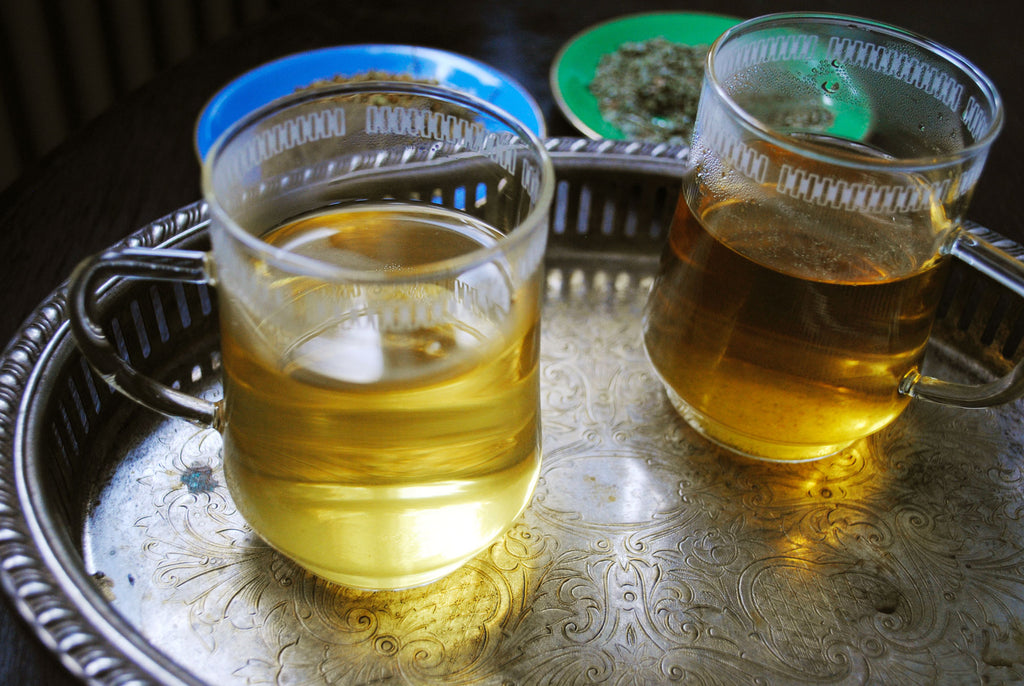What Happens When You Treat Mint Leaves Like Tea?

Working in the specialty tea and coffee industry for decades, Mark Mooradian is no stranger to beverages—and the man also knows his herbs. He's the botanical genius who designed many of our most popular chai and herbal blends, well-honed recipes we taste every week in our warehouse to ensure the proper balance. These days, though, Mark spends much of the year on the 30-acre Karnak Farm in Saco, Maine, where he grows the best elderflower and mint herbals we've ever sipped.
In the cup, his elderflower has a wonderfully sweet aroma that belies a shockingly complex, almost savory floral flavor; the mint is soft, sweet and buttery, reminiscent of a high mountain oolong. Both have a richer mouthfeel than you'd likely expect from a caffeine-free herbal infusion—surprisingly like tea made from Camellia sinensis.
Much of the secret to Mooradian's production is plain old good agriculture: He uses uncommon cultivars that prioritize flavor over yield. He grows his crops organically and harvests them by hand. He pays attention to what the land needs and reacts accordingly. "My friend gave me a book by Andy Brennan," he says, "the person makes Aaron Burr cider, and it has this line, 'I don't make the cider, nature makes the cider. I just set the conditions to make the cider. If I tried to make it, it wouldn't be as good.'

"There are many things on the farm I thought I understood," Mooradian continues, "because I knew what the word meant. But you don't really know the details, even though you think you understand the words."
Most good tea farmers share this reverence for nature. The challenge with tea, though, is that cultivation is only half the story. You also have to process the leaves with great skill and attention to make anything tasty of the raw material. And this is where Karnak Farm's herbals depart from most other tisanes, because the crops are treated as carefully as traditional tea.
A typical farmer making dried mint, Mooradian explains, lets the plants dry in the fields before picking. The leaves would then be finished in an oven to bake out any residual moisture.
Mooradian's method is much more labor intensive, but yields a far more flavorful result. He designed a 1,000-square-foot solar drying system that uses the heat of the sun to dry the herbs, but in a controlled setting that allows for adjustments in temperature, humidity and airflow throughout the process. The freshly harvested elderflower and mint start at 90° to 100°F, then, come nightfall, the heat is reduced to around 70°. This allows the beneficial latent bacteria in the flowers and leaves to come to life, kickstarting a series of chemical reactions that alter and enhance the herbs.

"There's a definite change from just putting them in your oven," he continues. "They'll get dry that way, but you won't get the richness or complexity or body." Overnight, the Karnak elderflowers turn from a creamy white to a golden yellow. The mint leaves, on the other hand, retain a sprightly verdancy that air-drying in the field simply can't produce.
The end result is something that brews and drinks a lot like tea, despite having nothing to do with Camellia sinensis. That's a beautiful thing, and something we're excited to support and share with you.
Taste the local summer harvest Mint from Karnak Farm.
